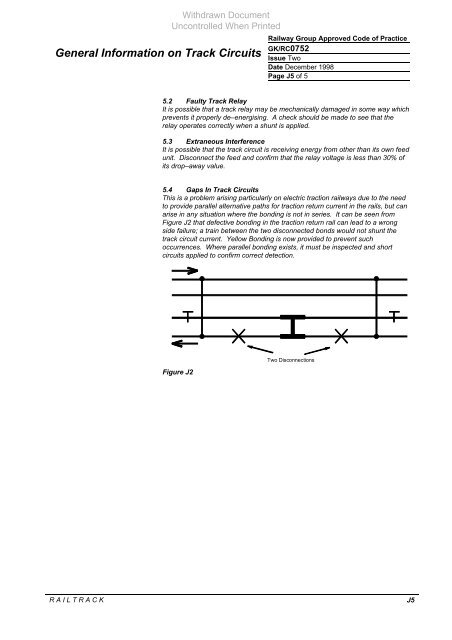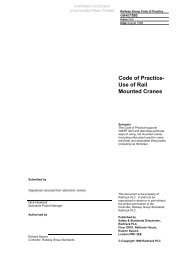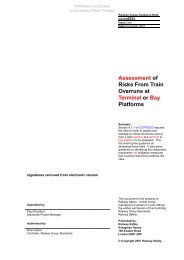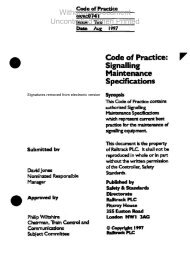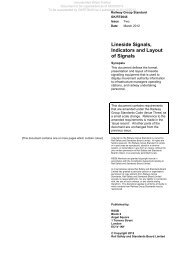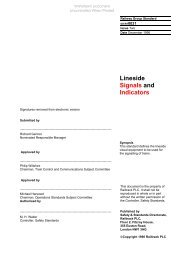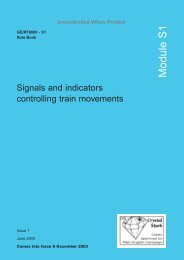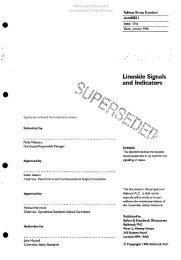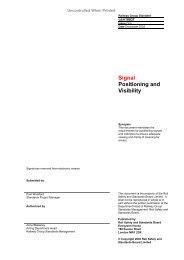General Information on Track Circuits - RGS Online
General Information on Track Circuits - RGS Online
General Information on Track Circuits - RGS Online
Create successful ePaper yourself
Turn your PDF publications into a flip-book with our unique Google optimized e-Paper software.
Withdrawn Document<br />
Unc<strong>on</strong>trolled When Printed<br />
<str<strong>on</strong>g>General</str<strong>on</strong>g> <str<strong>on</strong>g>Informati<strong>on</strong></str<strong>on</strong>g> <strong>on</strong> <strong>Track</strong> <strong>Circuits</strong><br />
Railway Group Approved Code of Practice<br />
GK/RC0752<br />
Issue Two<br />
Date December 1998<br />
Page J5 of 5<br />
5.2 Faulty <strong>Track</strong> Relay<br />
It is possible that a track relay may be mechanically damaged in some way which<br />
prevents it properly de–energising. A check should be made to see that the<br />
relay operates correctly when a shunt is applied.<br />
5.3 Extraneous Interference<br />
It is possible that the track circuit is receiving energy from other than its own feed<br />
unit. Disc<strong>on</strong>nect the feed and c<strong>on</strong>firm that the relay voltage is less than 30% of<br />
its drop–away value.<br />
5.4 Gaps In <strong>Track</strong> <strong>Circuits</strong><br />
This is a problem arising particularly <strong>on</strong> electric tracti<strong>on</strong> railways due to the need<br />
to provide parallel alternative paths for tracti<strong>on</strong> return current in the rails, but can<br />
arise in any situati<strong>on</strong> where the b<strong>on</strong>ding is not in series. It can be seen from<br />
Figure J2 that defective b<strong>on</strong>ding in the tracti<strong>on</strong> return rail can lead to a wr<strong>on</strong>g<br />
side failure; a train between the two disc<strong>on</strong>nected b<strong>on</strong>ds would not shunt the<br />
track circuit current. Yellow B<strong>on</strong>ding is now provided to prevent such<br />
occurrences. Where parallel b<strong>on</strong>ding exists, it must be inspected and short<br />
circuits applied to c<strong>on</strong>firm correct detecti<strong>on</strong>.<br />
Figure J2<br />
Two Disc<strong>on</strong>necti<strong>on</strong>s<br />
R A I L T R A C K J5


